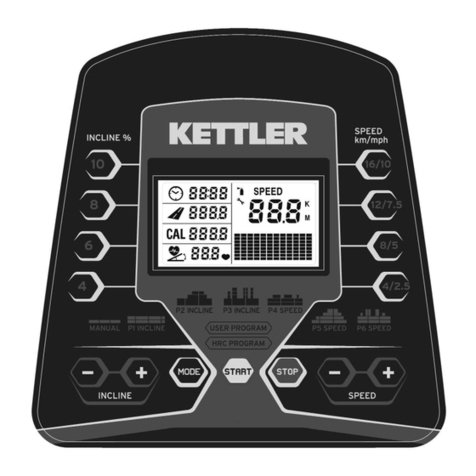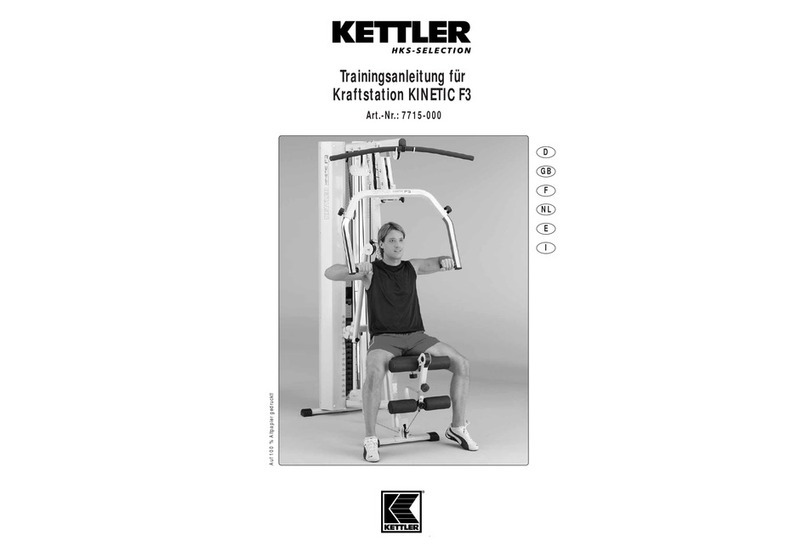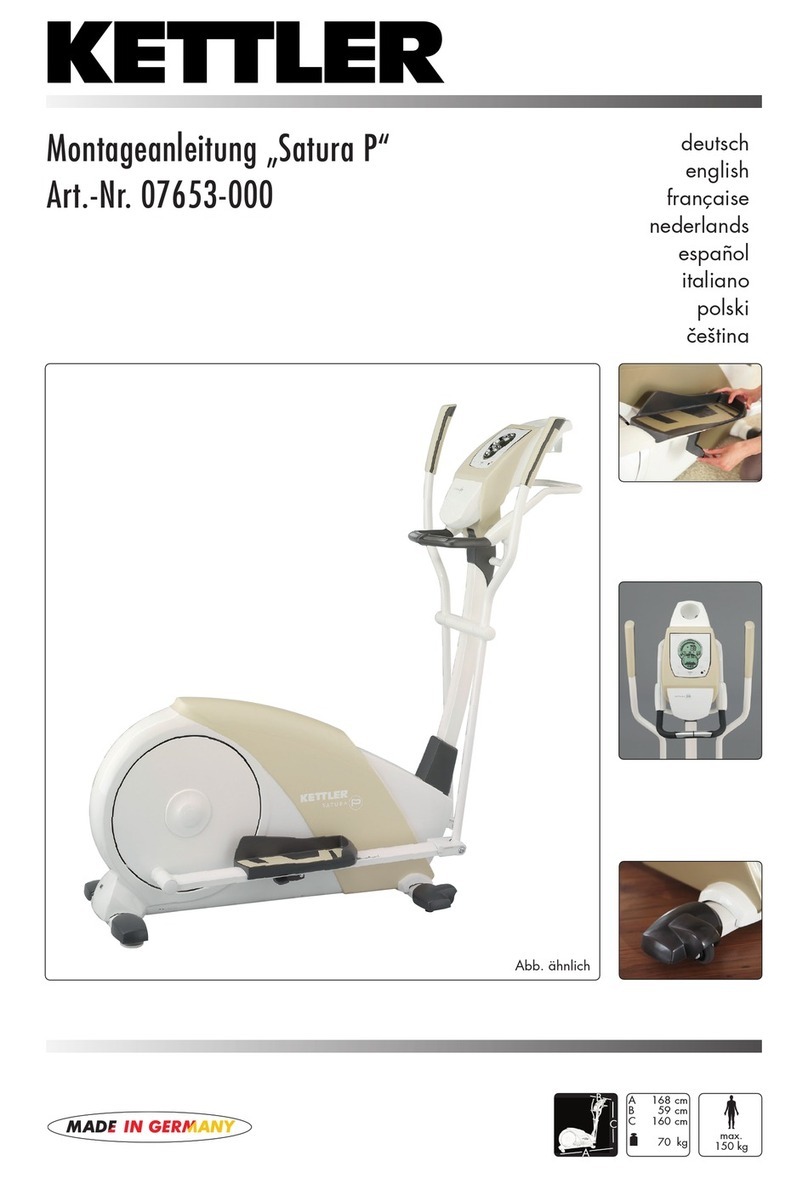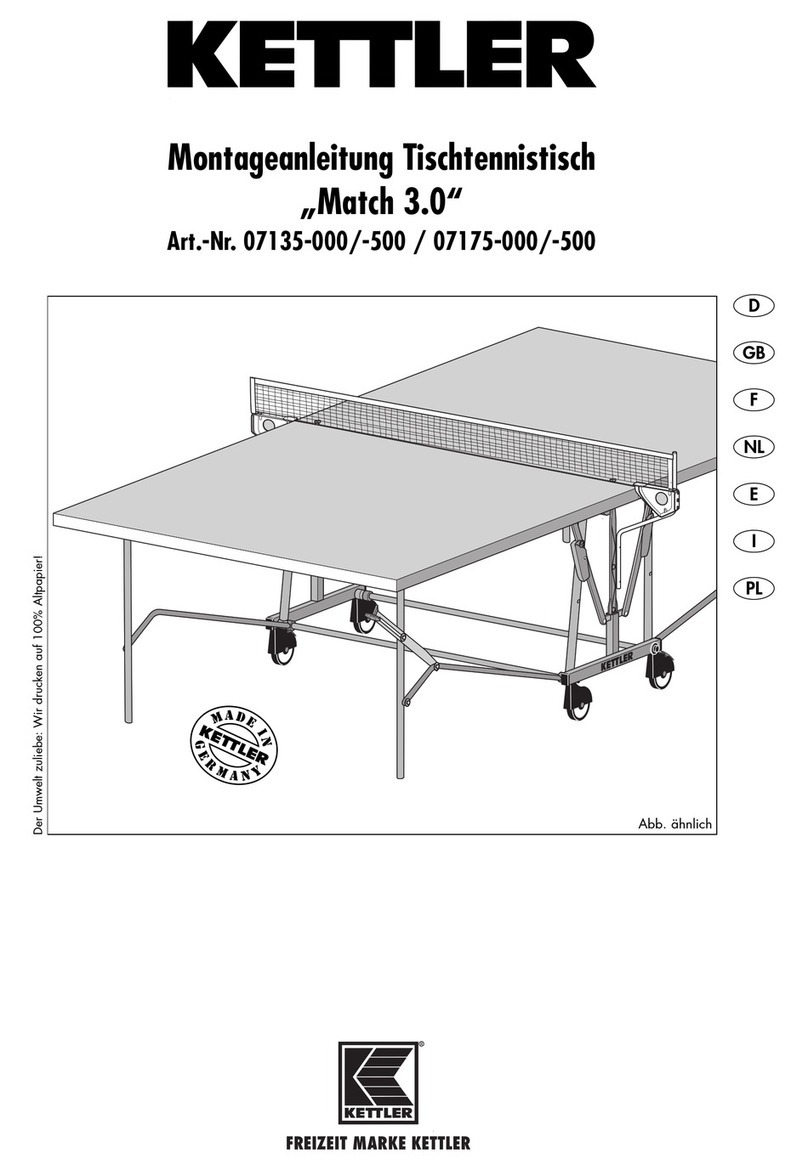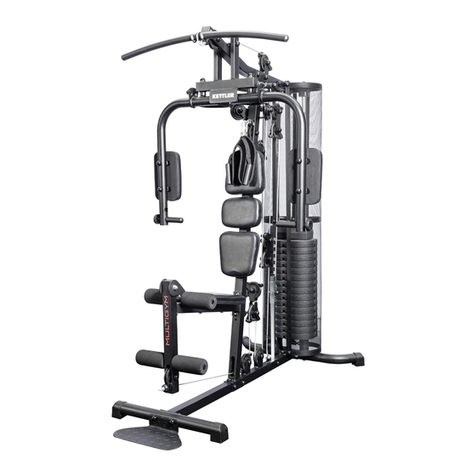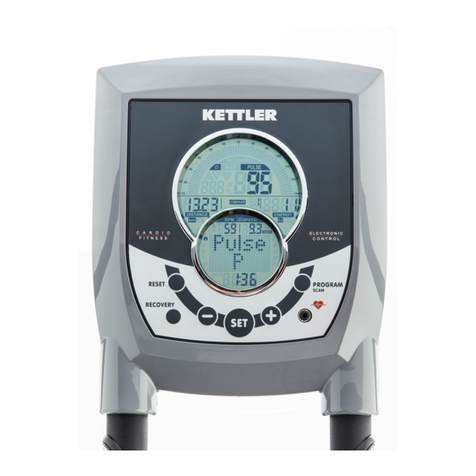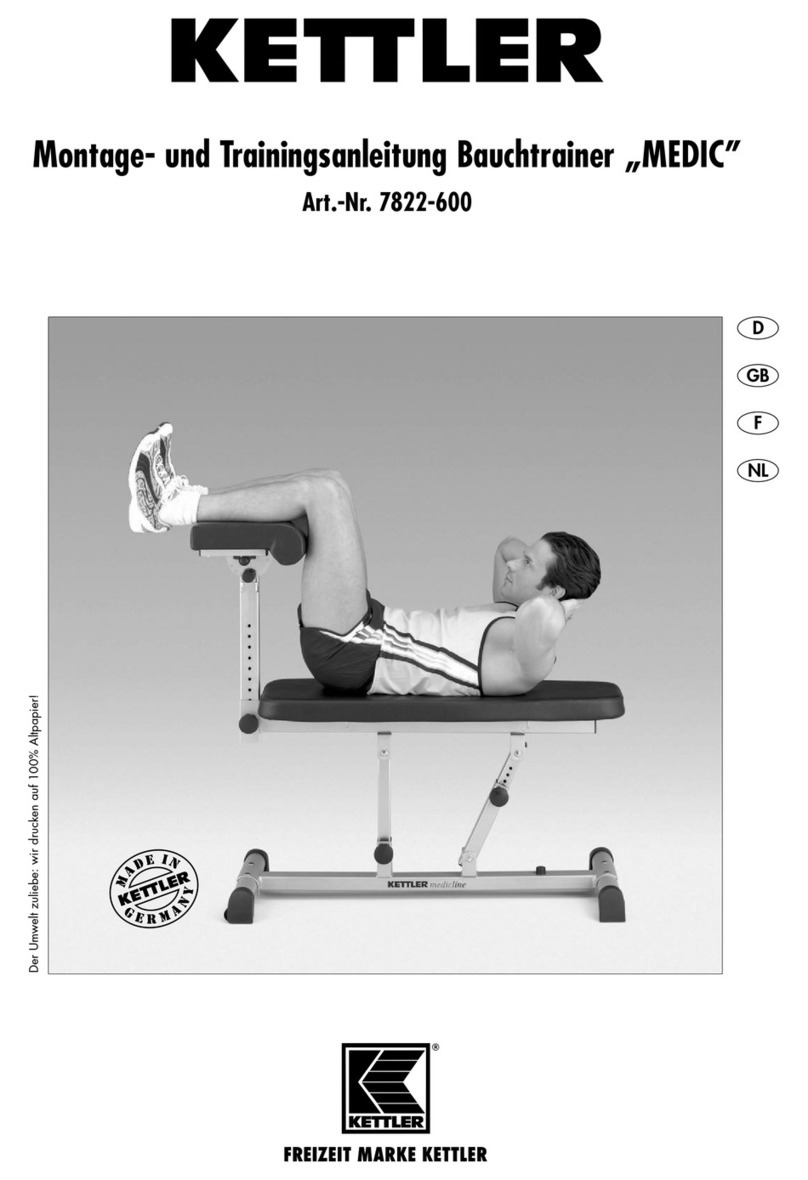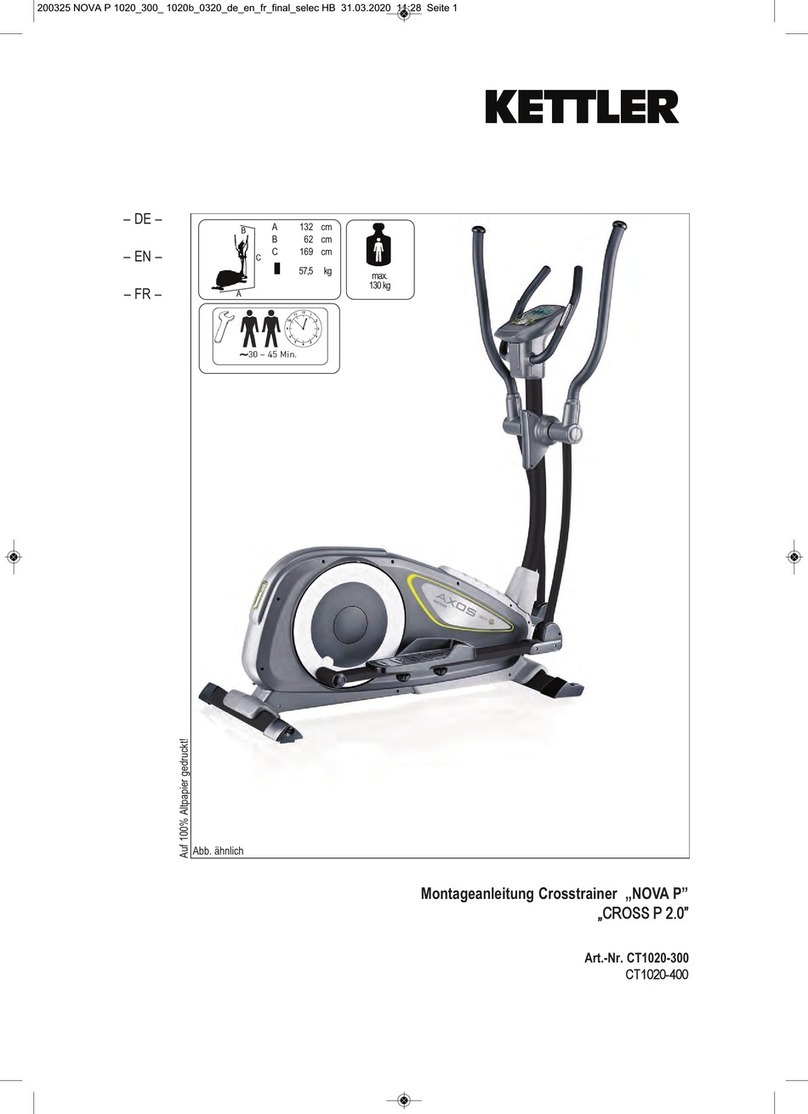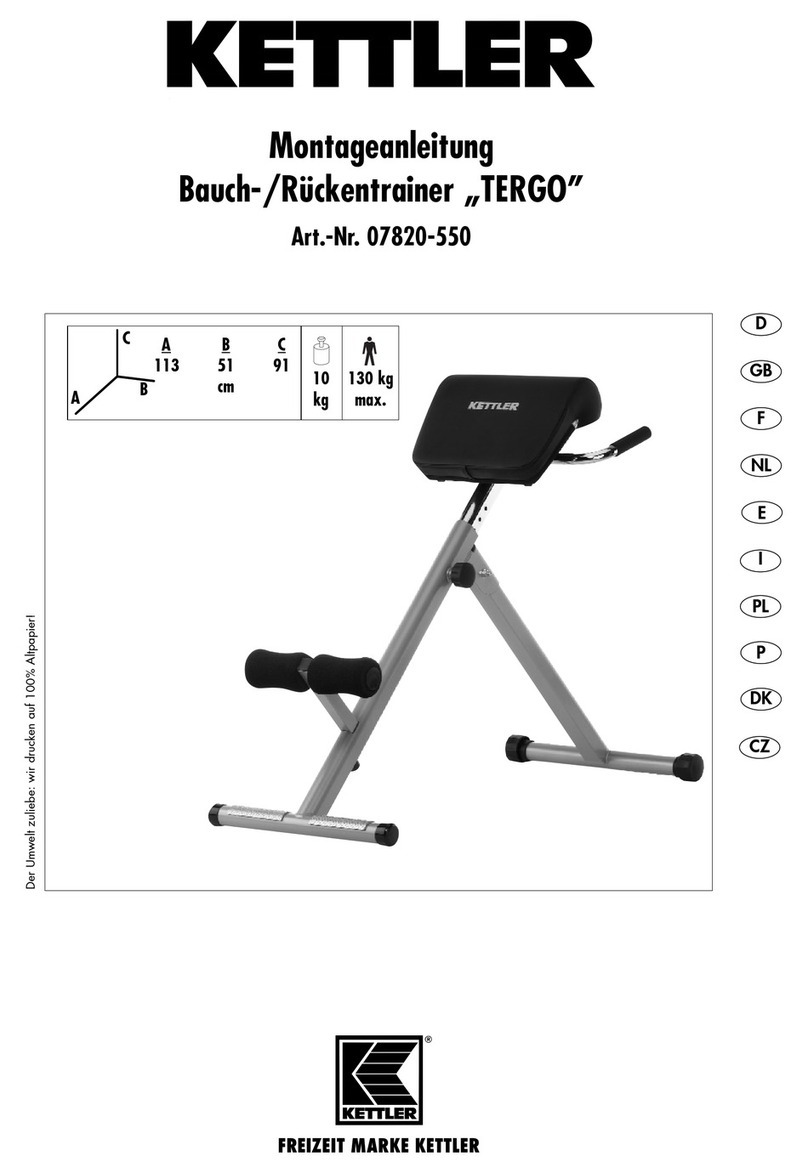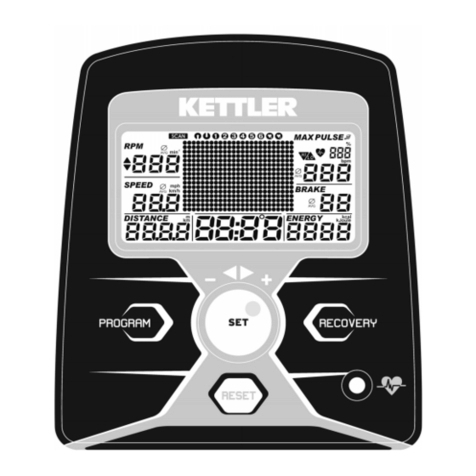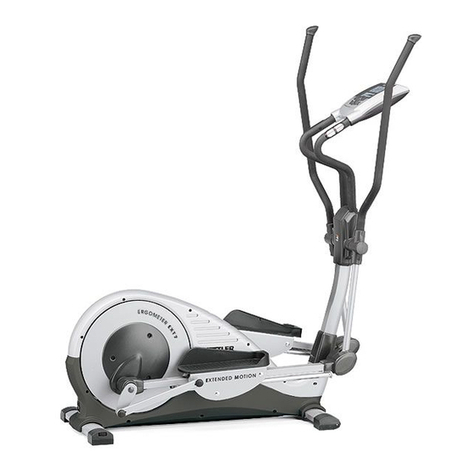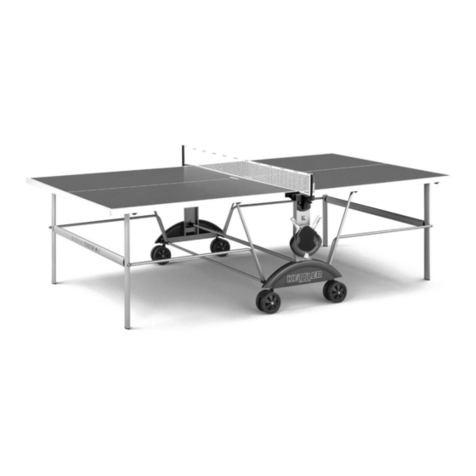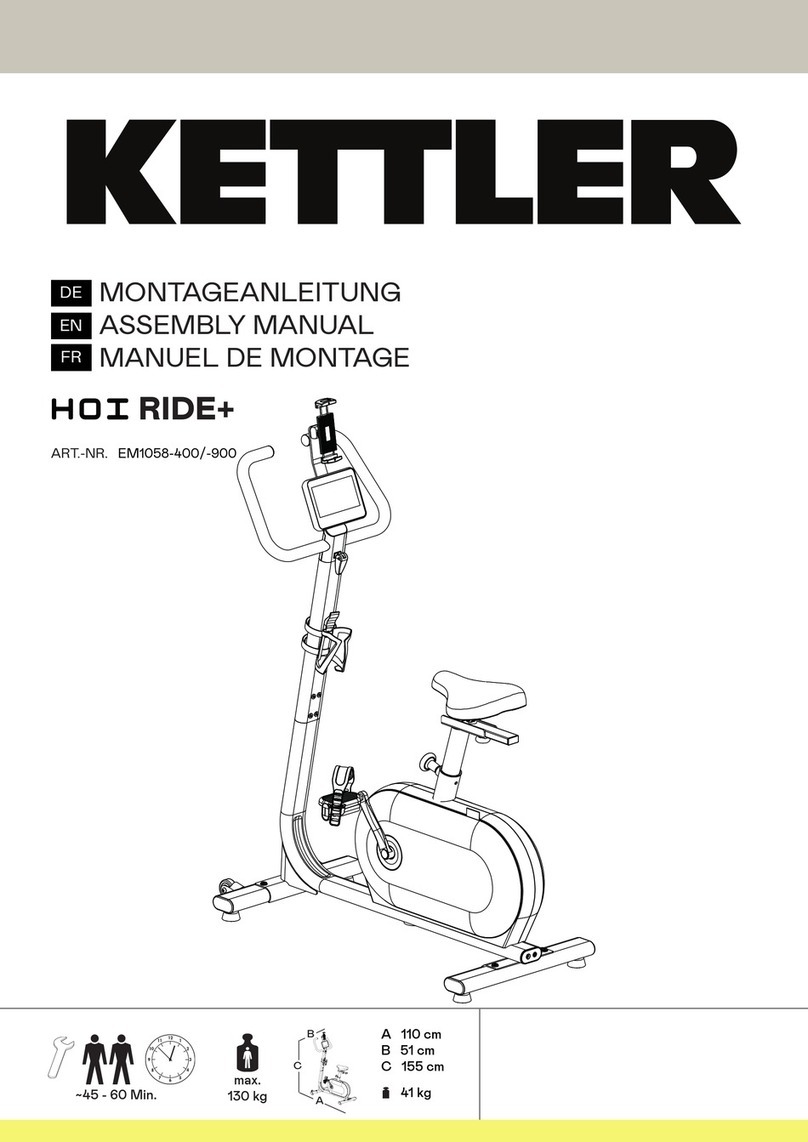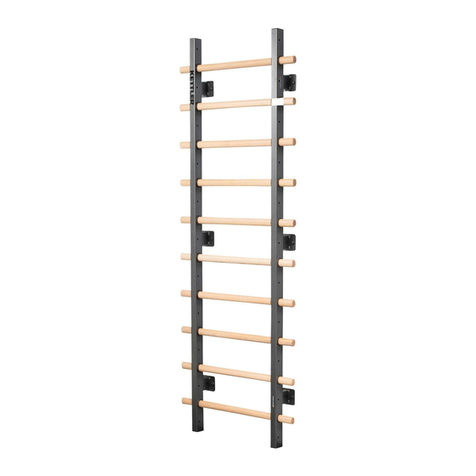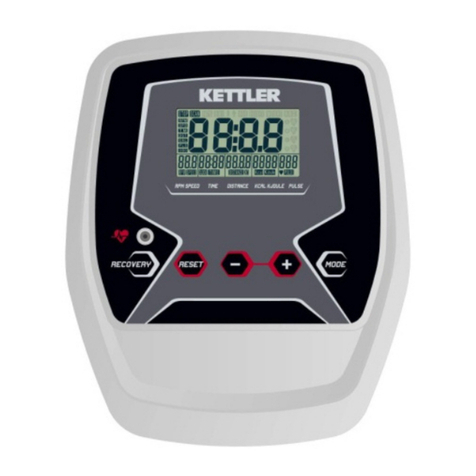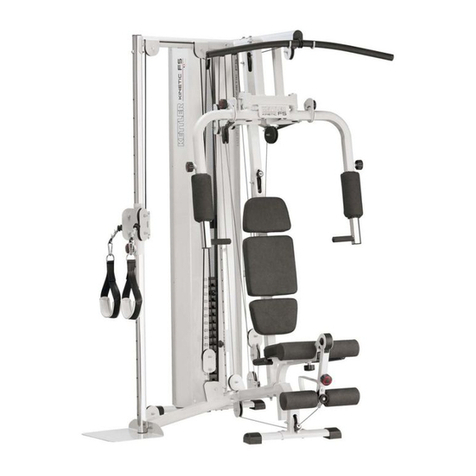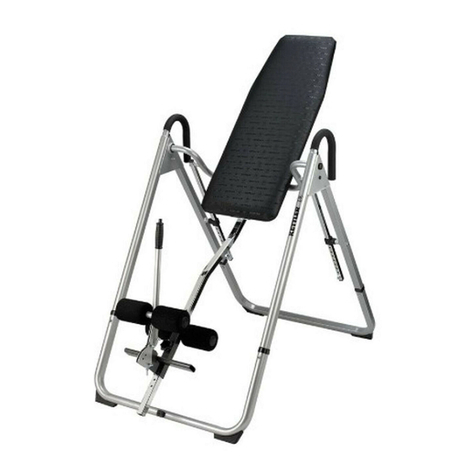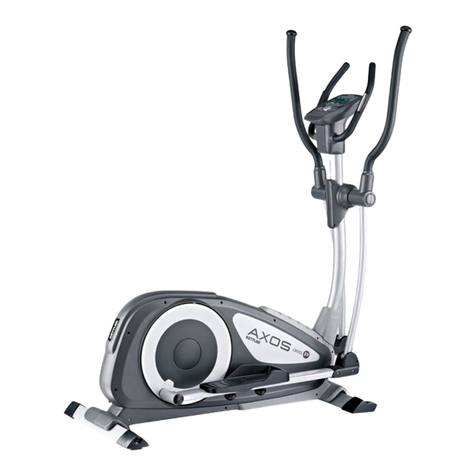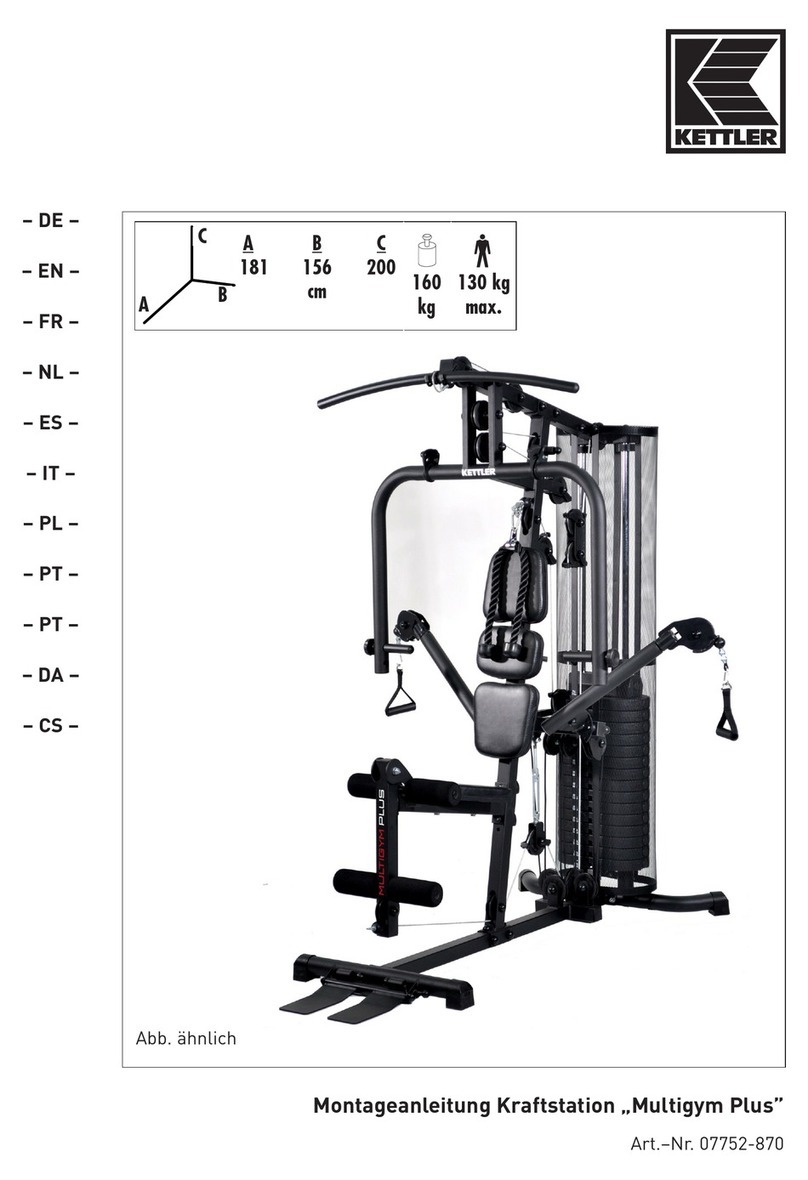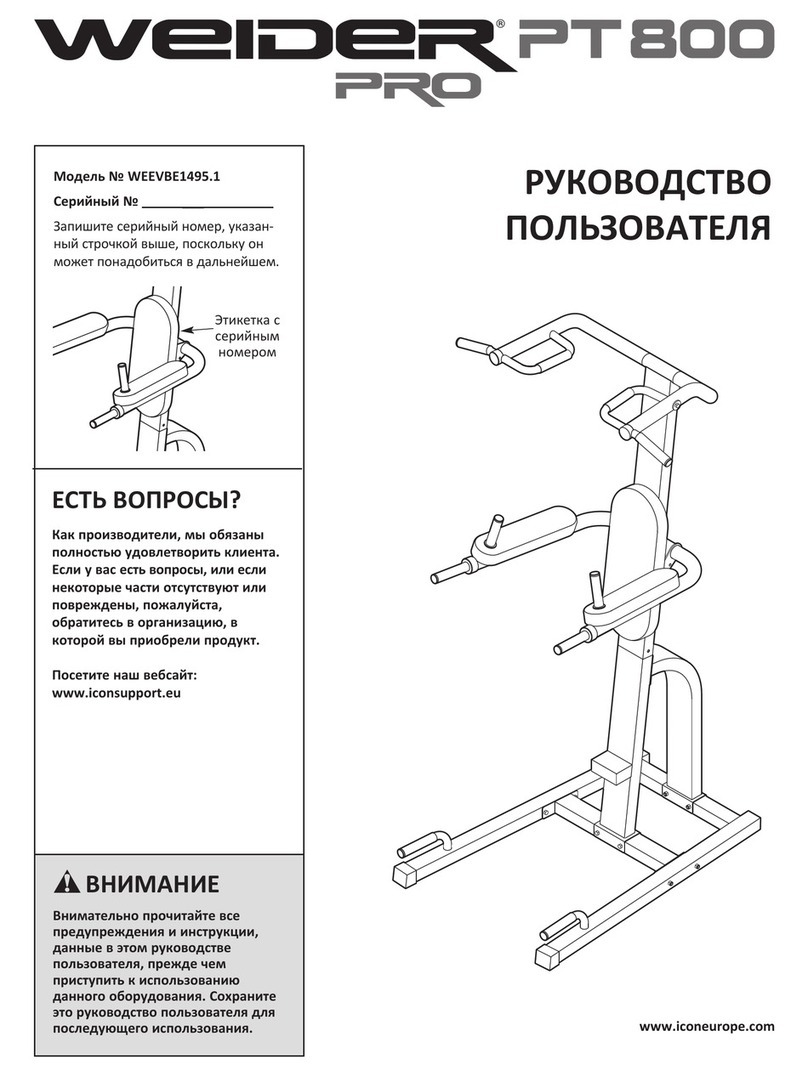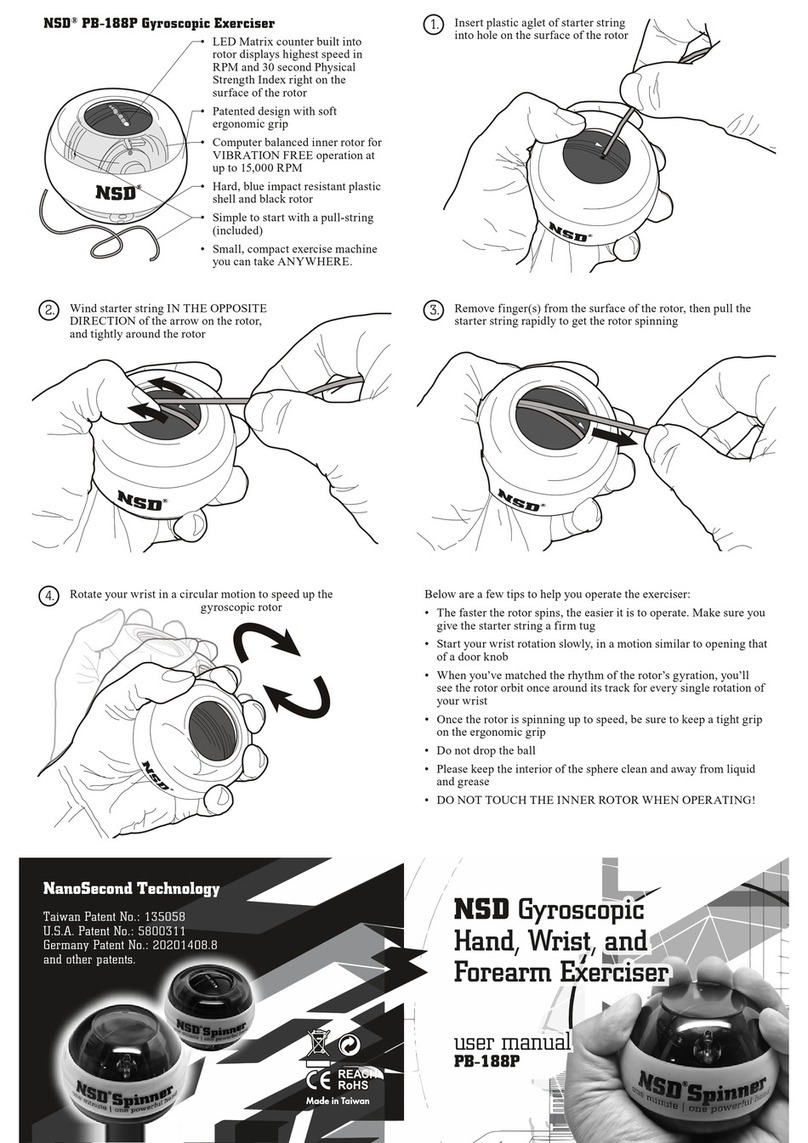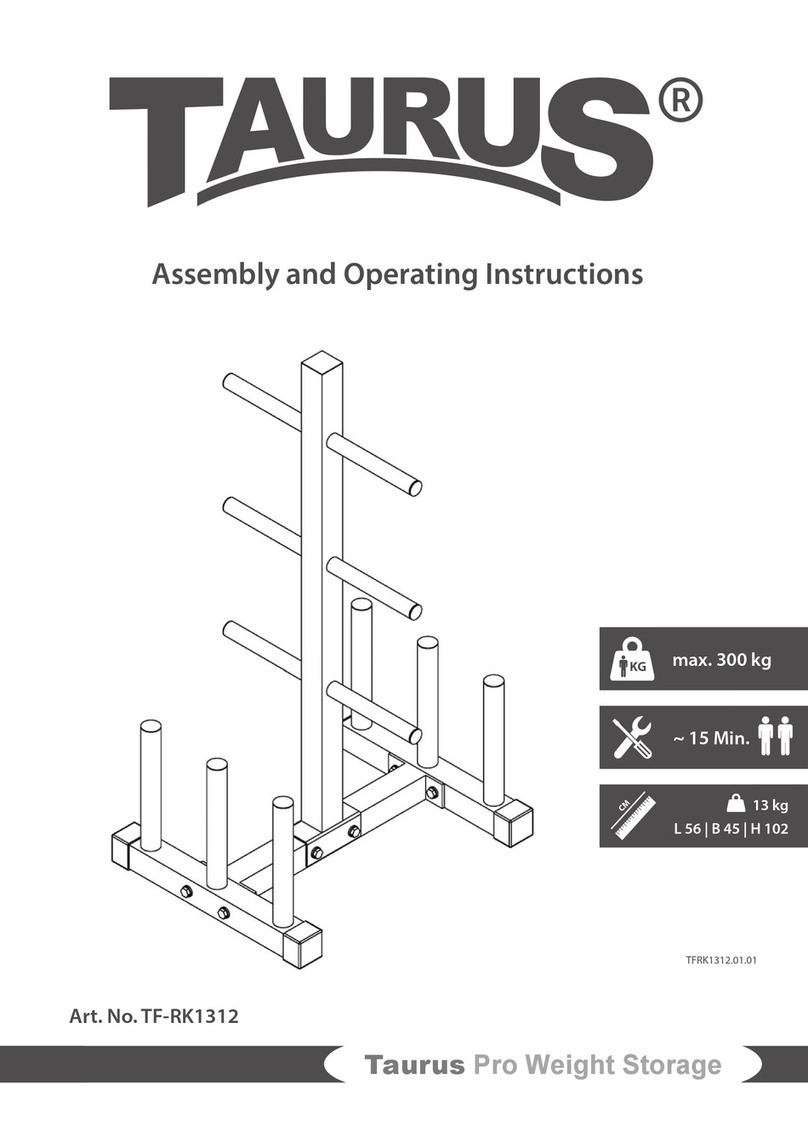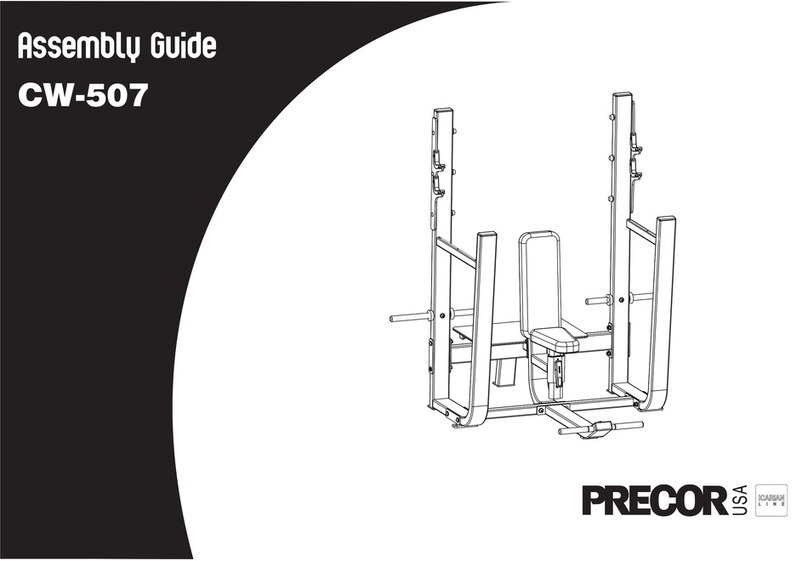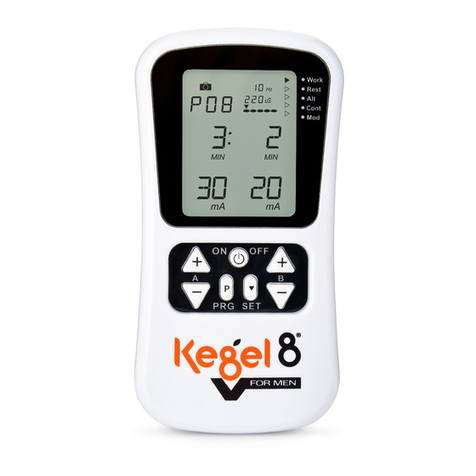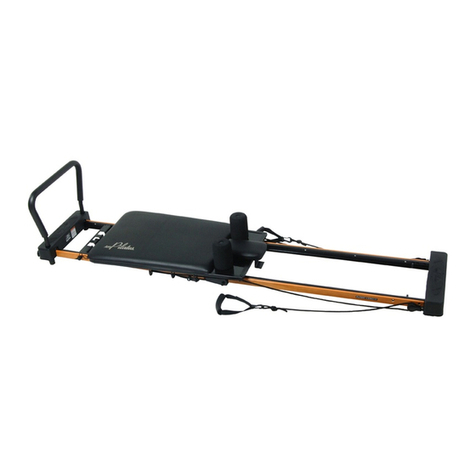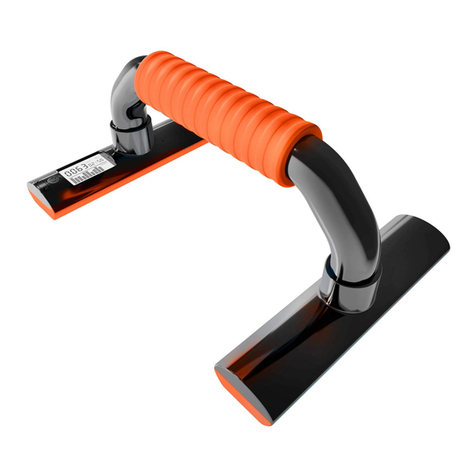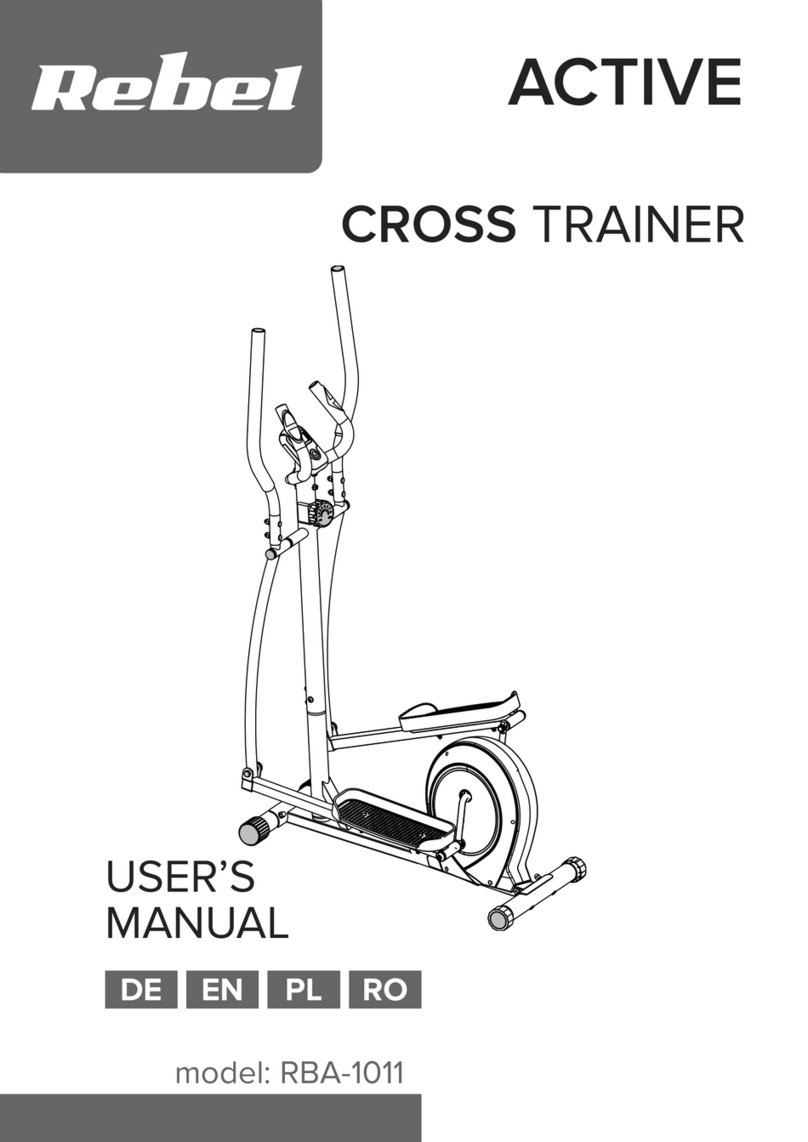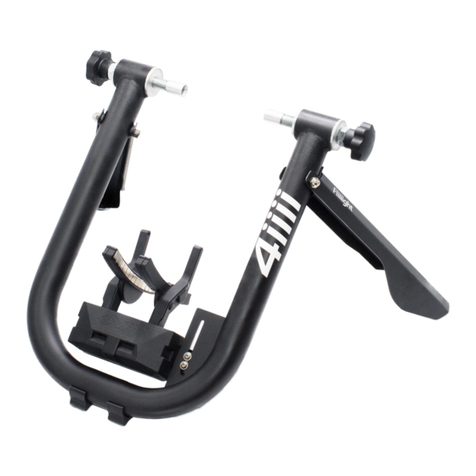15
D15.
Kick-backs
Ausgangsposition: Linken Arm und rechtes Bein auf der
Hantelbank abstützen. Die rechte Hand fasst die
Kurzhantel. Der Arm ist im 90°-Winkel im Ellenbogen-
gelenk gebeugt und wird dicht am Oberkörper gehalten.
Bewegungsausführung: Den Arm im Ellenbogengelenk
rückwärts strecken und wieder senken. Nach Abschluss
der Übungswiederholungen die Seite wechseln.
Beanspruchte Muskulatur: Armstrecker, Schulter- und
Rückenmuskulatur
GB 15.
Kick-backs
Starting position: Support the body with the right knee and the left hand
on the bench. Take hold of the dumbbell in the right hand, with the right
elbow bent at 90° and hold tightly in against the torso.
Exercise: Straighten the arm backwards at the elbow and lower again.
Repeat the exercise and then change sides.
Benefits: Triceps, shoulder and back muscles
F
15.
Extension des bras vers l’arrière
Position initiale:
main gauche et genou droite en appui sur le banc. L’haltère
court dans la main droite. Tenir collé au tronc, le bras plié par rapport au
coude à 90°.
Mouvement: étendre l’avant-bras vers l’arrière puis le redescendre. Quand
les répétitions sont terminées, changer de côte.
Muscles sollicités: Muscles tendeurs des bras, musculation des épaules et du dos
NL
15. Kick-back
Uitgangspositie: linker arm en rechter been in kniestand op de bank steunen.
Met de rechter hand de halter vastpakken. De elleboog in een hoek van
negentig graden gebogen, de arm vrij van het bovenlichaam.
Bewegingsuitvoering: de arm in het ellebooggewricht naar achteren strekken
en weer laten zakken. Na de oefeningsherhalingen de andere arm nemen.
Getrainde spieren: triceps, schouder- en rugspieren
E 15. Extensión del brazo hacia atrás
Posición inicial: El brazo izquierdo y la pierna derecha, hincada, están
apoyados en el banco de halterofilia. La mano derecha sostiene la man-
cuerna. El brazo está en un ángulo de 90° respecto al codo y es mantenido
cerca del cuerpo.
Movimiento(s): Estirar el brazo hacia atrás en el codo y volver a bajarlo.
Después de terminar los movimientos de repetición, cambiar el lado.
Efecto sobre: musculo extensor del brazo, hombros y musculatura de la espalda.
I 15. Kick-back
Posizione di partenza: appoggiare il braccio sinistro e la gamba destra sul
banco del manubrio. La mano destra prende il manubrio corto. Il braccio è pie-
gato a 90° nell’articolazione dell’avambraccio e viene tenuto aderente al busto.
Esecuzione del movimento: stirare il braccio all’indietro nell’articolazione
dell’avambraccio ed abbassarlo di nuovo. Dopo la ripetizione dei movimenti
cambiare lato. Effetto: muscolo estensore delle braccia, muscolatura delle
spalle e della schiena
D14.
Armstrecken mit der Kurzhantel
Ausgangsposition: Rückenlehne in steiler Position ein-
stellen. Gerader Sitz auf der Bank. Der Rücken lehnt am
Rückenpolster. Kurzhantel von oben fassen. Die Kurz-
hantel wird bei stark angewinkeltem Arm hinter dem
Kopf gehalten.
Bewegungsausführung: Arm in die Hochhalteposition
über den Kopf strecken und wieder in die Ausgangs-
position absenken. Nach Abschluss der Übungs
wiederholungen die Seite wechseln. Beanspruchte Muskulatur: Armstrecker
GB 14. One arm triceps extension
Starting position: Fix the backrest in its most upright position. Sit upright on
the bench with the back against the backrest. Grasp the short weight bar
from above. Hold the weight bar behind the head with the arm bent at the
elbow. Exercise:
Stretch the arm into the overhead position and lower it again
to the
starting position. Repeat the movement several times and then change
hands. Benefits: Triceps
F14.
Etirement des bras avec haltère court
Position initiale: Relever le dossier entièrement à la verticale. S’asseoir sur le
banc, le dos bien droit appuyé contre le dossier. Saisir le haltère court d’en
haut. Le maintenir derrière la tête, le bras fortement fléchi.
Mouvement: Tendre le bras au-dessus de la tête en position de maintien
élevé, puis l’abaisser à nouveau dans sa position initiale. Les répétitions
désirées une fois terminées, recommencer avec l’autre bras.
Muscles sollicités: Muscles tendeurs des bras
NL
14. Armstrekoefening met een korte halterstang
Uitgangspositie: de rugplank rechtop zetten. Ga rechtop op de bank zitten
met de rug tegen het rugkussen. Pak de halter met één hand bovenhands
vast. Houd de halter achter uw hoofd; uw arm dient daarbij gebogen te zijn.
Oefening: strek uw arm tot boven uw hoofd en breng deze weer tot in de uit-
gangspositie naar beneden. Na deze oefening meerdere malen uitgevoerd
te hebben, dient u dezelfde oefening met uw andere arm uit te voeren.
Getrainde spieren: triceps
E 14. Estirar los brazos con las pesas cortas
Posición inicial: colocar el respaldo en posición vertical. Sentado de forma
recta en el banco. La espalda apoyada contra el acolchado. Las pesas cor-
tas se agarra desde arriba. El brazo formando un ángulo cerrado sostiene
las pesas detrás de la cabeza.
Movimiento: estirar los brazos.sobre la cabeza y volver a bajarlos a la posi-
ción inicial.Después de concluír la repetición del ejercicio cambiar de brazo.
Efecto sobre: musculo extensor del brazo
I 14. Estensione delle braccia con il manubrio corto
Posizione di partenza: Schienale in posizione verticale. Posizione eretta sulla
panca. La schiena è appoggiata all’imbottitura dello schienale. Afferrare il
piccolo manubrio dall’alto. Il piccolo manubrio è tenuto dietro la nuca con il
braccio fortemente piegato ad angolo.
Esecuzione del movimento: Stendere il braccio alzato sopra la nuca e abbas-
sare di nuovo alla posizione di partenza. Cambiare il lato dopo avere termi-
nato le ripetizioni dell’esercizio. Azione: muscolo estensore delle braccia
